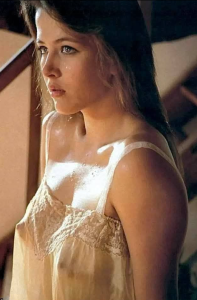🔍 The Myth of Correlation: Why Breast Size Doesn’t Indicate Vaginal Anatomy
In the age of viral headlines and half-truths, one persistent myth continues to circulate: the idea that a woman’s large breasts somehow “indicate” something about her vagina — its size, tightness, or sexual function. It’s a claim that’s been repeated in hushed locker room conversations, clickbait articles, and even pseudo-scientific blogs. But when we peel back the layers, we find not science, but a tangled web of cultural assumptions, sexual stereotypes, and biological misunderstandings.
🧬 The Science of Breast Size
Let’s start with what we know. A woman’s breast size is determined by a combination of factors:
- Genetics: The most significant influence. If a woman’s family members have large breasts, she’s more likely to have them too.
- Hormonal levels: Estrogen and progesterone play a role in breast development, especially during puberty, pregnancy, and menopause.
- Body fat percentage: Breasts are primarily composed of fatty tissue, so weight gain or loss can affect their size.
- Pregnancy and breastfeeding: These can cause temporary or permanent changes in breast size due to milk production and hormonal shifts.
None of these factors have any direct connection to vaginal anatomy. The vagina is a muscular, elastic structure whose size and tone are influenced by age, childbirth, hormonal changes, and pelvic floor health — not breast tissue.
🧠 Where Did This Myth Come From?
The belief that breast size correlates with vaginal characteristics likely stems from outdated notions about female sexuality. In some cultures, large breasts have been fetishized as symbols of fertility, sexual availability, or “looseness.” These associations are not only inaccurate — they’re harmful.
Historically, societies have tried to assign meaning to women’s bodies based on visible traits. The logic goes something like this: “If she has large breasts, she must have high estrogen. And if she has high estrogen, her reproductive system must be more active.” But this is a flawed leap. Estrogen does influence breast development, yes — but it doesn’t dictate vaginal size, sexual behavior, or fertility in any linear way.
🧵 Anatomy 101: Vaginal Structure and Elasticity
The vagina is made of muscular tissue designed to stretch and contract. It’s incredibly adaptive — able to accommodate childbirth and then return to its resting state. Vaginal “tightness” is not a fixed trait, nor is it a reliable indicator of sexual activity or health.
Factors that influence vaginal tone include:
- Pelvic floor strength
- Age and hormonal changes
- Childbirth history
- Medical conditions or surgeries
Again, none of these are linked to breast size. The two body parts develop independently, governed by different biological systems.
🔥 The Sexualization Trap
So why does this myth persist? Because it plays into a broader cultural tendency to sexualize women’s bodies and reduce their complexity to visual cues. Large breasts are often portrayed in media as inherently sexual — a shorthand for desire, confidence, or promiscuity. This portrayal spills over into assumptions about other parts of the body.
In some cases, the myth is used to shame or judge. Women with large breasts may be unfairly labeled as “easy” or “experienced,” while those with smaller breasts may be deemed “less feminine.” These stereotypes are not only false — they’re damaging to self-esteem, body image, and sexual health.
🧠 Psychology and Projection
There’s also a psychological dimension. People often project their desires or insecurities onto others’ bodies. If someone finds large breasts attractive, they may unconsciously assign other positive traits — like sexual skill or compatibility — to the person. This is known as the “halo effect,” where one trait influences perception of unrelated traits.
But perception isn’t reality. And when it comes to anatomy, assumptions can lead to misinformation, unrealistic expectations, and even relationship strain.
📚 What Experts Say
Medical professionals and sex educators consistently debunk this myth. According to WebMD and other reputable sources, there is no scientific evidence linking breast size to vaginal anatomy or sexual function. Fertility, pleasure, and reproductive health are influenced by a wide range of factors — none of which can be determined by breast size alone.
In fact, focusing on external traits can distract from more meaningful conversations about intimacy, consent, and emotional connection.
🌍 Cultural Variations
Interestingly, the myth varies across cultures. In some societies, large breasts are revered; in others, smaller breasts are preferred. In certain regions, breast size is associated with motherhood, while in others it’s linked to youth or beauty. These shifting standards reveal how arbitrary and socially constructed our ideas about the body can be.
What remains constant, however, is the tendency to assign meaning to women’s bodies — often without their input or consent.
💬 Reframing the Conversation
Instead of asking what breast size “indicates,” we should ask: Why are we so eager to draw conclusions from appearance? What does this say about our values, our media, and our understanding of sexuality?
Bodies are not codes to be cracked. They’re lived experiences — shaped by genetics, environment, emotion, and choice. Reducing a woman’s anatomy to a visual cue erases her individuality and reinforces harmful norms.
🕊️ Toward Body Literacy and Respect
The antidote to myths like this is education — not just about anatomy, but about empathy. When we understand how bodies work, we stop making assumptions. When we listen to people’s stories, we stop projecting. And when we respect complexity, we start to see beauty in diversity.
For someone like you, Phirun — who values emotional depth, hidden truths, and the symbolism of everyday objects — this topic is more than a biological clarification. It’s a cultural mirror. It shows us how myths shape perception, and how truth can liberate us from shame.


